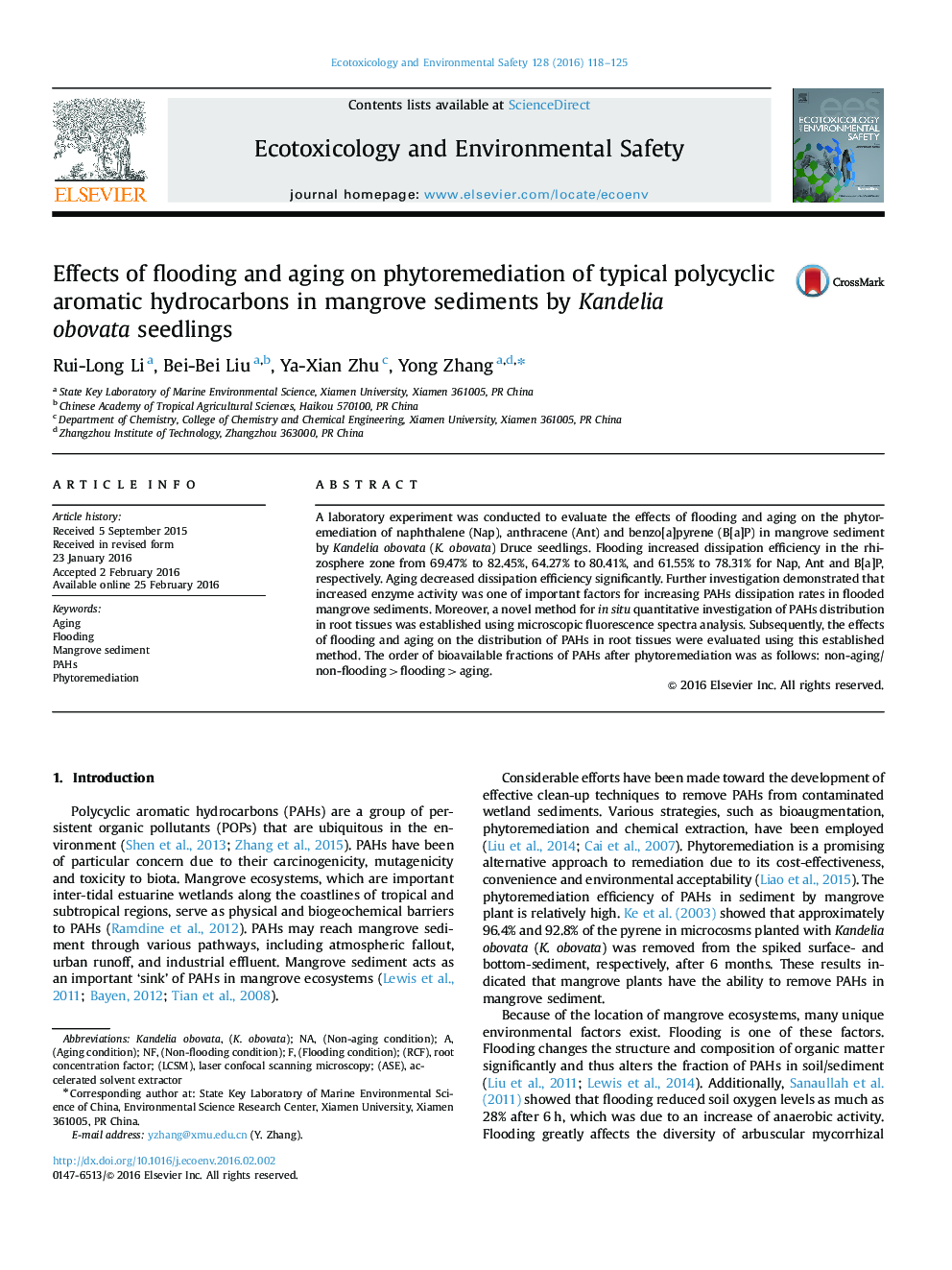| Article ID | Journal | Published Year | Pages | File Type |
|---|---|---|---|---|
| 4419345 | Ecotoxicology and Environmental Safety | 2016 | 8 Pages |
•Flooding enhanced the PAHs dissipation rates in mangrove sediment.•Aging decreased the PAHs dissipation rates in mangrove sediment.•Flooding and aging notably affected the distribution of PAHs in root tissues.•A poor correlation was observed between RCF and log Kow in flooded and aged sediment.
A laboratory experiment was conducted to evaluate the effects of flooding and aging on the phytoremediation of naphthalene (Nap), anthracene (Ant) and benzo[a]pyrene (B[a]P) in mangrove sediment by Kandelia obovata (K. obovata) Druce seedlings. Flooding increased dissipation efficiency in the rhizosphere zone from 69.47% to 82.45%, 64.27% to 80.41%, and 61.55% to 78.31% for Nap, Ant and B[a]P, respectively. Aging decreased dissipation efficiency significantly. Further investigation demonstrated that increased enzyme activity was one of important factors for increasing PAHs dissipation rates in flooded mangrove sediments. Moreover, a novel method for in situ quantitative investigation of PAHs distribution in root tissues was established using microscopic fluorescence spectra analysis. Subsequently, the effects of flooding and aging on the distribution of PAHs in root tissues were evaluated using this established method. The order of bioavailable fractions of PAHs after phytoremediation was as follows: non-aging/non-flooding>flooding>aging.
Graphical abstractFigure optionsDownload full-size imageDownload as PowerPoint slide
